How to Do Lateral Raises for Sculpted Shoulders (Video)
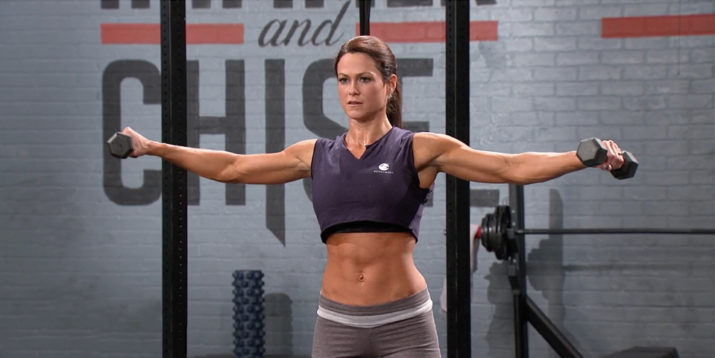
When it comes to sculpting strong, defined shoulders, the lateral raise is one of the most underrated exercises out there.
Not only do lateral raises target the most visible muscles covering those joints — the deltoids — but they also help fill out your upper back by working several other muscles that support and control shoulder movement, including your traps.
But aesthetics aren’t the only reason to give your delts more attention in your workouts.
“Your shoulders are the most mobile joints in your body, and that comes with a consequence: greater risk of injury,” says Trevor Thieme, C.S.C.S. “Strengthening the muscles that stabilize and control your shoulders will go a long way toward minimizing that risk.”
Here are some tips on how to perform the lateral raise properly, and more reasons why you should make it a regular part of your upper body workout routine.
Lateral Raises: Step-by-Step Instructions
- Stand tall with your feet hip-width apart, holding a pair at dumbbells at arms’ length by your sides, palms facing inward.
- Maintaining a slight bend in your elbows, raise your arms directly out to your sides until they’re at shoulder level (your palms should be facing downward at the top of the movement).
- Slowly lower the weights back to the starting position.
How to Make Lateral Raises Easier
You can make this move easier by using lighter dumbbells.
If you experience discomfort in your shoulders, Thieme suggests doing a more joint-friendly variation of a dumbbell lateral raise, called a scaption: Instead of lifting your arms out to your sides, lift your arms to shoulder level at a 30-degree angle from your body.
“The weights should be vertical and your palms should be facing inward (neutral grip) at the top of the movement,” he says.
How to Make Lateral Raises Harder
Make lateral raises harder by using heavier dumbbells, or lifting more slowly, Thieme suggests.
Slowing the movement down will extend your muscles’ time under tension and ensure you’re not relying on your momentum to complete the move.
Bonus Tips for Doing Lateral Raises
“Most people keep their thumbs slightly higher than their pinkies as they lift the weights,” says Thieme. “But if you rotate your hands so that your pinkies remain slightly higher than your thumbs, you’ll get more lateral deltoid activation.”
The harder it works, the stronger it will become and the faster your gains will be.
Variations on the Lateral Raise
If you want to stray from the classic standing lateral raise, you can switch things up by making a few tweaks.
1. Seated dumbbell lateral raise
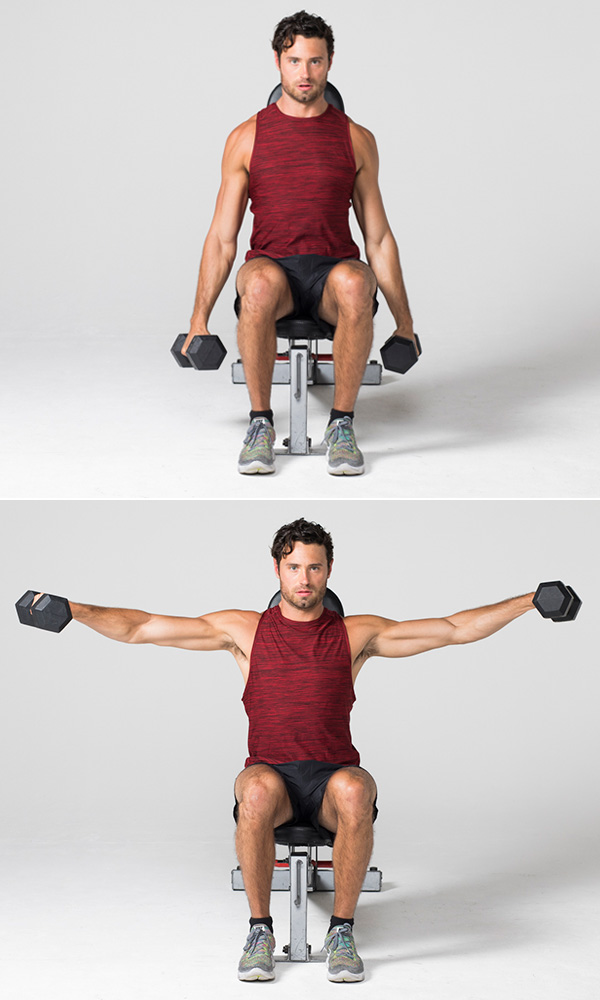
Try a seated dumbbell lateral raise by performing the move sitting on a bench, which will reduce the amount your core has to work.
- Sit on a bench or chair, holding a pair of dumbbells at arm’s length by your sides, palms facing inward.
- Keeping your arms and back straight, your core braced, and your feet flat on the floor, raise the dumbbells out to your sides until your arms are parallel to the floor.
- Reverse the movement to return to the starting position.
2. Front raise
The front raise (raising your arms in front of you, instead of the side) will place more emphasize on the anterior deltoid.
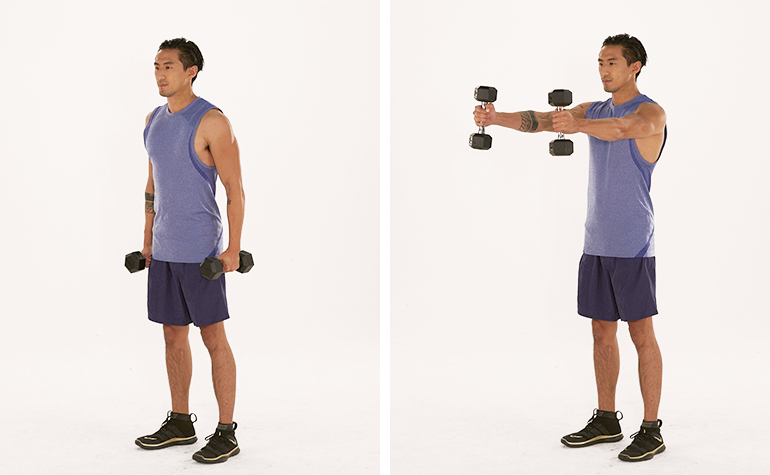
- Stand with you feet hip-width apart, holding a dumbbell in each hand with your arms at your side.
- Keeping your arms straight, lift the weights up directly in front of you to shoulder height with your palms facing each other.
- Lower back down and repeat.
3. Bent-over lateral raise (reverse fly)
A bent-over lateral raise (hinge at your hips so your back is parallel to the floor, then lift your arms to the side) will target your posterior deltoid and back muscles more.
- Stand with your feet shoulder-width apart, holding a dumbbell in each hand.
- Hinge at the hips (press the hips back as you lower your chest) until your chest is almost parallel with the ground. Allow the weights to hang straight down at arm’s length, palms facing each other.
- Keeping your back flat and your core braced, raise your arms out to your sides until they’re in line with your body. Squeeze your shoulder blades together at the top of the movement.
- Return to the starting position, and repeat.
4. Resistance band lateral raise
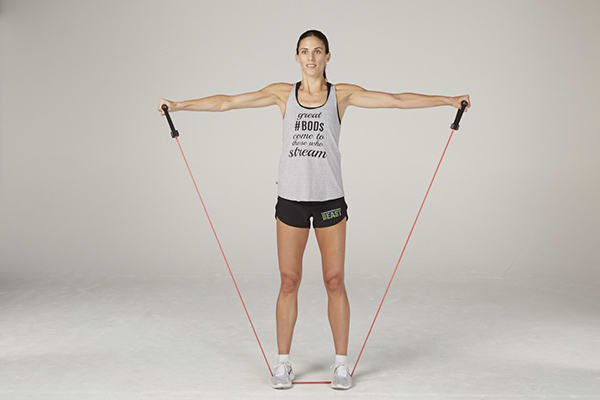
No gym and no dumbbells? No problem. You can also do this move with resistance bands.
- Stand in the middle of a band and place each hand in a handle. Brace your core, and keep the band in place with your foot.
- Lift the band out to the sides to shoulder level, and hold for a beat before you return to start.
Or, if you have access to a gym, you can do a cable lateral raise.
The Benefits of Lateral Raises
Strong shoulders are the base of most upper body movements. They make motions like lifting, pulling, and pushing a lot easier.
Any time you lift something overhead — whether that’s groceries going up to the top shelf or lifting a toddler — your shoulders are kicking into high gear.
Exercises like lateral raises will help you perform everyday moves like these with more ease.
Plus, defined shoulders always look great in sleeveless shirts!
What Muscles Do Lateral Raises Work?
Lateral raises primarily build and strengthen the lateral (or middle) head of the deltoid. But they’re not an isolation exercise.
Thieme says lateral raises also work the anterior (or front) head of the shoulder, the trapezius, and the supraspinatus (one of the four muscles in the rotator cuff).
In other words, “most of the muscles that control shoulder movement,” Thieme explains.
Deltoid
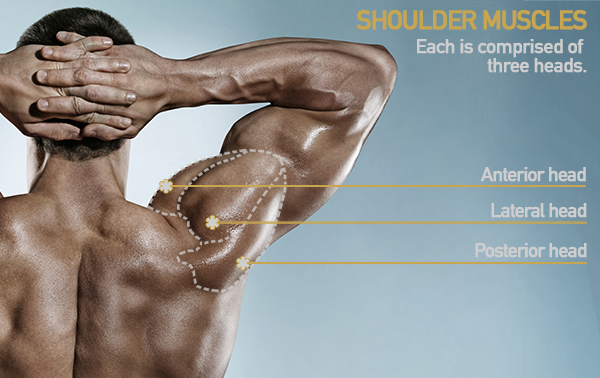
The deltoid is what gives your shoulders their size and definition.
Each deltoid muscle has three heads: the anterior (front), lateral (middle), and posterior (rear).
The anterior head moves your arm up and to the front; the lateral head lifts your arm to the side (as in the motion of a lateral raise); and the posterior moves your arm behind you.
Rotator cuff
The four muscles of the rotator cuff are collectively smaller than the deltoid, but they perform the very important task of stabilizing the shoulder.
As mentioned previously, the shoulder is one of the most mobile and injury prone joints in the body, making strong rotator cuffs valuable assets.
Trapezius
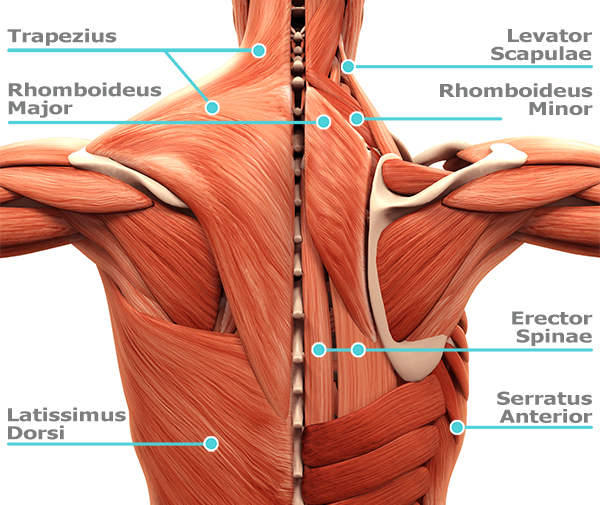
Often shortened to the “traps,” these muscles run vertically along either side your upper spine and fan out toward your shoulders.
The upper parts of your traps shrug your shoulders, the middle portions retract your shoulders, and the lower portions pull your shoulders downward.
